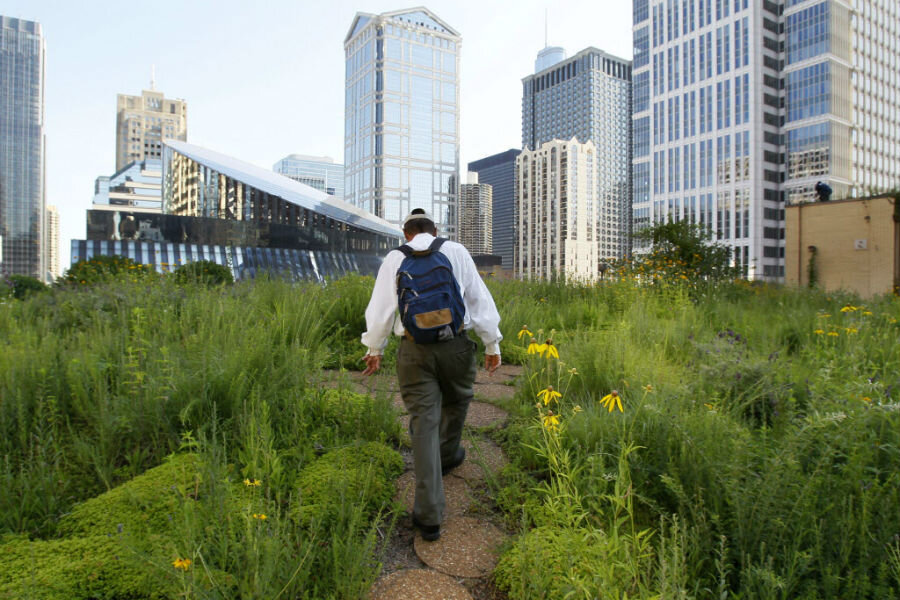Urban Homesteading project teaches city dwellers to farm in close quarters
Loading...
Jules Dervaes is an urban farmer based in Pasadena, California. Dervaes and his three adult children—Justin, Anais, and Jordanne—operate an Urban Homesteading project on their property. The Dervaes family grows approximately 7,000 pounds of organic produce annually, powers their home with alternative energy, fuels their car with homemade biodiesel, keeps farm animals for eggs and manure, and cultivates honeybees.
Food Tank had the opportunity to speak to the Dervaes Family about their adventures in Urban Homesteading and what self-sufficiency means to them.
Food Tank (FT): Can you talk about how you became involved in Urban Homesteading and self-sufficiency?
Jules Dervaes (JD): I started homesteading in an isolated town in New Zealand, where I had immigrated to in the '70s after graduating from college in '69. Later, I returned to the States but continued homesteading on 10 acres in Florida. In 1984, I moved to Pasadena and brought our homesteading lifestyle and adapted it to urban surroundings. Transforming our home to a homestead took many years, as we incorporated sustainable elements from growing food, raising chickens, preserving, composting, conservation, and more.
FT: How have your self-sufficiency endeavors been received by the community?
Dervaes Family (DF): In 2001, we challenged ourselves to see how much produce we could harvest from our tiny plot and started a website to document our growing and self-sufficiency efforts. Along with blogging about our journey, we decided to keep track of our progress by weighing the harvest and calculating our energy and water usage. Putting the numbers on paper shocked and inspired us (especially the harvest weigh-in), because we actually saw our progress and conservation efforts in black in white. With our website presence, folks in our community started to come over wanting to learn more.
FT: Do you offer any outreach classes to encourage others to follow in your footsteps?
DF: Yes, not only are we growing food but also community. We host many skill-sharing workshops and community-based activities and are hoping to continue to grow with more programs in the future.
FT: What made you decide to move from your 10-acre lot in Florida to Pasadena?
JD: In 1984, I came out to attend theology college in Pasadena. The move was supposed to be temporary; however, circumstances didn’t turn out that way. Having downsized from our rural 10 acres to our urban one-fifth acre, we decided to make a go—doing what we could with what we had. We challenged ourselves to take our small urban lot and turn into in something productive.
FT: You currently live on your urban homestead with your three adult children. Have they always been interested in gardening and living off the grid?
JD: Farming and self-sufficiency is a family endeavor; each member brings their talents and passions to this lifestyle. Not only are we growing food but also we are encouraging community through our farmstand farm box, educational outreach programs, and community events. The desire to grow things is in our genes as I come from a long line of nursery men. So we can’t help it! From an early age, my children were always helping me in the garden—planting and harvesting.
FT: How does growing your food and living off the grid represent activism and empowerment, and why is this important to your family?
DF: Growing food or knowing a skill is empowering. You know that whatever may come your way, with your two hands you can survive or make a difference in this world.
FT: How can individuals in apartments and shared living spaces make strides towards self-sufficiency?
DF: Be a conscious consumer—support your local farmer or food artisans. Conserve. It doesn’t take much money to use cloth bags or conserve water or electricity.
FT: What advice do you have for Food Tank readers who want to learn more?
DF: Start small and learn to be flexible. One size does not fit all, everyone has different circumstances. But we all can take small sustainable steps that collectively have a big impact.
This article first appeared at Food Tank.







